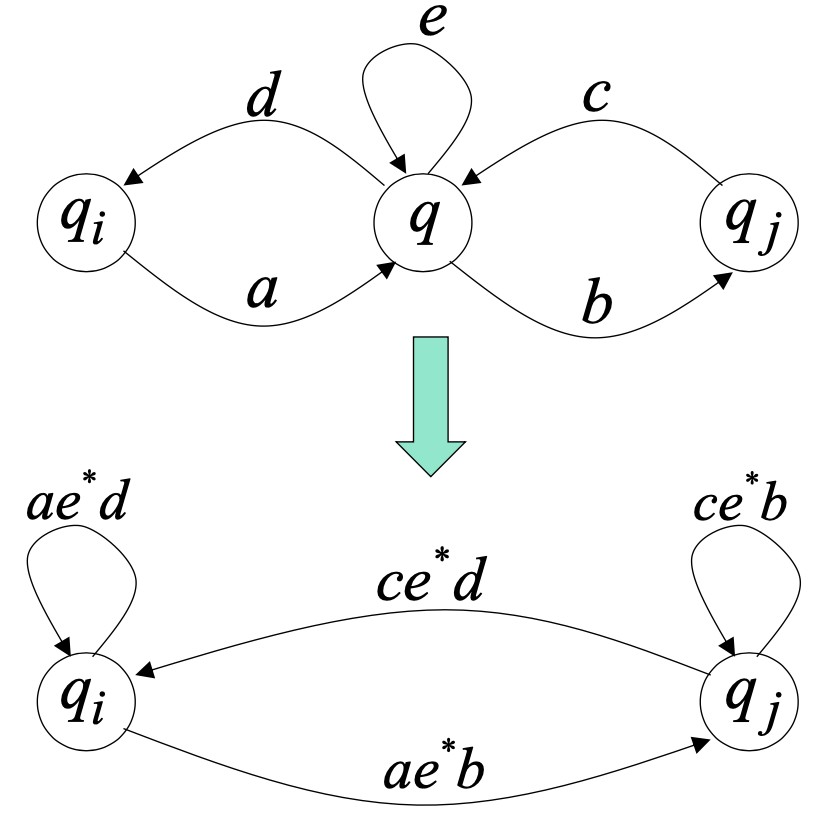5. Regular Expressions
Jan 20/25, 2022
Regular expressions
-
describe regular languages
-
primitive expressions: \(\emptyset, \epsilon, \alpha\)
-
given regular expressions \(r_1\) and \(r_2\), can compose to create other regular expressions
e.g. \(r_1 + r_2\) \(r_1 \cdot r_2\) \(r_1^*\) -
\(L(r)\) language of regular expression \(r\), for primitive expressions:
- \(L(\emptyset) = \emptyset\)
- \(L(\epsilon) = \{\epsilon\}\)
- \(L(\alpha) = \{\alpha\}\)
Regular expressions and regular languages
-
For any regular expression \(r\) the language \(L(r)\) is regular
-
Proof steps: show that languages generated by REs \(\Leftrightarrow\) Regular languages
-
languages generated by REs \(\subseteq\) Regular languages
=> proof by induction on the size \(r\)-
base case primitive expressions: \(L(\emptyset), L(\epsilon), L(\alpha)\) are regular languages
-
inductive step: suppose regular expressions \(r_1\) and \(r_2\) and \(L(r_1)\) and \(L(r_2)\) are regular languages => prove that \(L(r_1 + r_2)\) \(L(r_1 \cdot r_2)\) \(L(r_1^*)\) \(L((r_1))\) are regular
-
by inductive hypothesis we know \(L(r_1)\) and \(L(r_2)\) are regular, we also know union, concat, star of regular languages are closed, therefore these are regular:
-
\(L(r_1 + r_2) = L(r_1) \cup L(r_2)\)
- \(L(r_1 \cdot r_2) = L(r_1)L(r_2)\)
-
\(L(r_1^*) = L((r_1))^*\)
-
\(L((r_1)) = L(r_1)\) is trivially regular by induction hypothesis
-
using the regular closure of operations we can construct recursively the NFA \(M\) that accepts \(L(M) = L(r)\)
-
-
languages generated by REs \(\supseteq\) Regular languages
=> show that for any regular language L there is a regular expressions \(r\) with \(L(r) = L\) => convert NFA that accepts \(L\) to a regular expression-
since \(L\) is regular there is a NFA \(M\) that accepts it; take it with a single accept state
-
from \(M\) construct the equivalent generalized transition graph in which transition labels are regular expressions e.g. transition label \(a, b\) becomes \(a + b\)
-
reduce the states recursively
2-state general case:

- repeat until two states are left to obtain the resulting regular expression
-
-
Standard representations of regular languages: DFAs, NFAs, regular expressions